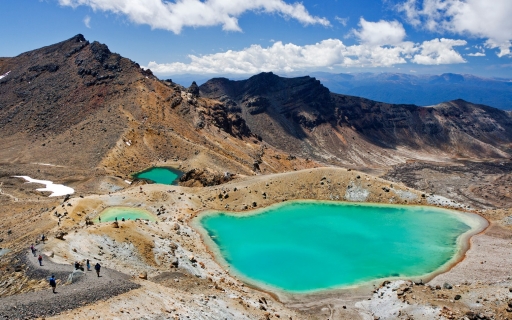Silverdale Temperatures: Monthly Averages and Year-Round Insights
On this page, we’ll explore Silverdale’s temperature statistics in detail, including day and night variations and monthly averages. We’ll also compare the annual temperature to other cities in New Zealand.
Monthly Temperature Averages
Seasonal changes in Silverdale bring a little variety without extreme temperature swings. Average maximum daytime temperatures reach a warm 24°C in February. In July, the coolest month of the year, temperatures drop to a mild 16°C. At night, expect even cooler temperatures, with lows averaging around 10°C.
The chart below illustrates the average maximum day and minimum night temperatures in Silverdale by month:
The minimum temperature is commonly observed between 4 AM and 6 AM, with the maximum occurring around 3 PM, when the sun’s strength is at its peak. February, the city’s warmest month, sees 196 hours of sunshine.
The chart below shows the average temperature throughout the year:
July, the city’s coldest month, sees about 123 mm of rainfall spread over roughly 19 days. It records 130 hours of sunshine of sunshine.
Annual Temperatures in New Zealand Compared
The map below shows the annual temperature across New Zealand. You can also select the different months in case you are interested in a specific month.
 very warm
very warm
 warm
warm
 pleasant
pleasant
 moderate
moderate
 cold
cold
 very cold
very cold
Silverdale Temperatures Compared World Wide
Silverdale’s average annual maximum temperature is 19°C. Let’s compare this with some popular tourist destinations:
In Lisbon, Portugal, the average annual temperature is 21°C, offering warm summers and mild, rainy winters.
In contrast, in Oslo, Norway, the average annual temperature is significantly lower at 10°C, with mild summers and cold winters.
Meanwhile, Buenos Aires, Argentina, enjoys a humid subtropical climate with an average annual temperature of 23°C, featuring hot summers and mild winters.
In Brisbane, Australia, the average annual temperature is 26°C, making it warmer than Sydney.
How does the temperature feel?
Humidity is an essential factor in how you experience temperature. When a warm period is accompanied by high humidity, it results in a higher perceived temperature. This is especially true when temperatures exceed 25°C, as it can cause greater discomfort.
In Silverdale, during the coolest month, July, you will experience 88% humidity, which is considered very high. This is accompanied by an average maximum temperature of 16°C. In the warmest month, February, the humidity is 79% combined with an average maximum temperature of 24°C, which creates a high-feel temperature. Explore our detailed page on humidity levels for further details.
How are these Temperatures Measured?
Generally, temperature data depicting climate is usually given over a 30-year average in order to reduce short-term fluctuations and reveal better long-term trends in climate conditions.
This temperature data is taken from land-based thermometers, ocean buoys, ships, and satellites. These measurements are transmitted to weather stations and climate centers around the globe where they are processed, averaged, and analyzed in order to monitor the trends and create climate models.
Temperatures in the Mountains
Although not all regions have mountains, elevated areas exhibit distinct temperature variations.
- Sun Exposure: Sunlit slopes tend to be warmer, while shaded areas remain cooler.
- Altitude Effects: Temperatures drop by approximately 6°C for every 1,000 meters of elevation, creating distinct microclimates.
For more detailed information about Silverdale’s weather, including monthly rainfall, sunshine hours, and humidity levels, visit our Silverdale climate page.
Current temperature in Silverdale
almost clear and no rain
almost clear and no rain
broken clouds and chance of slight rain




